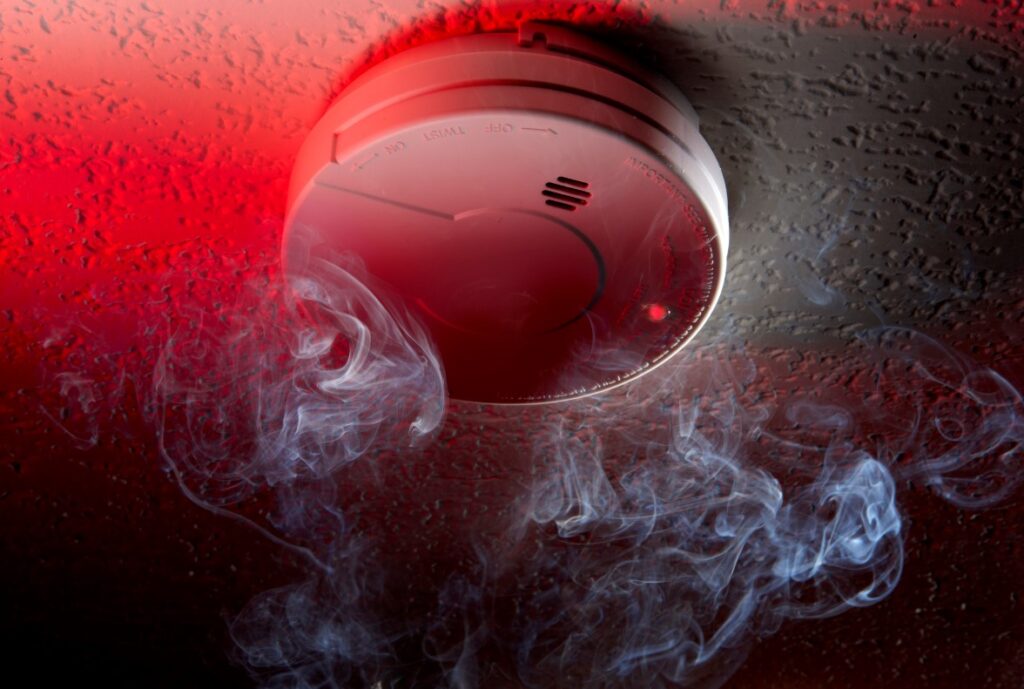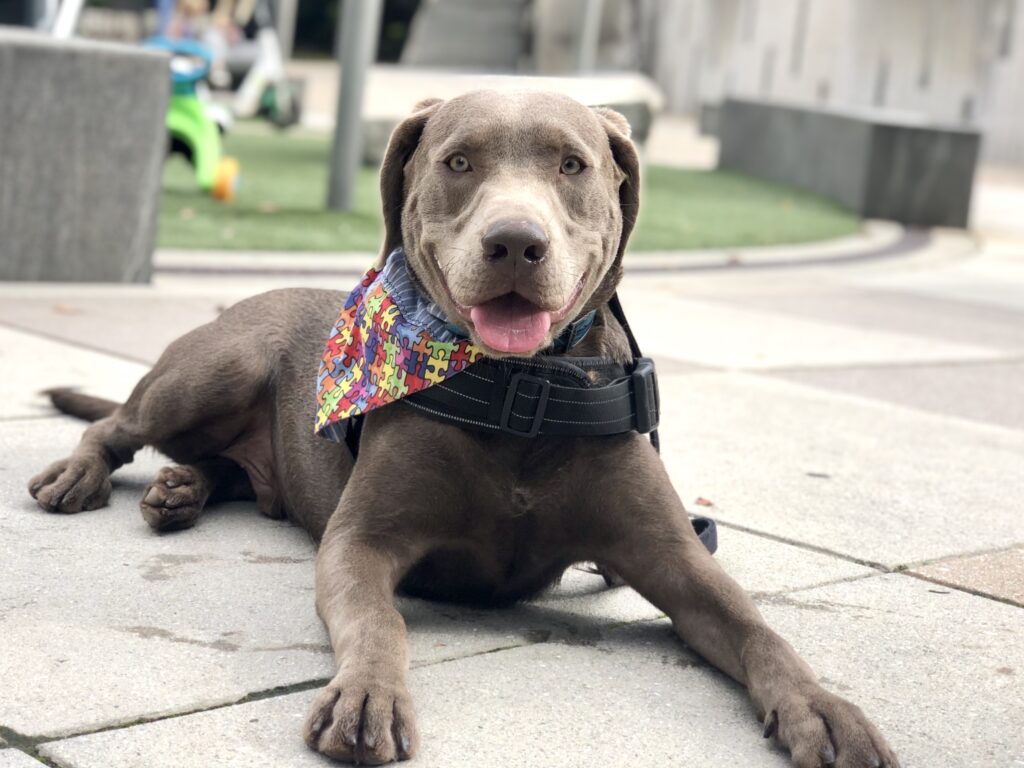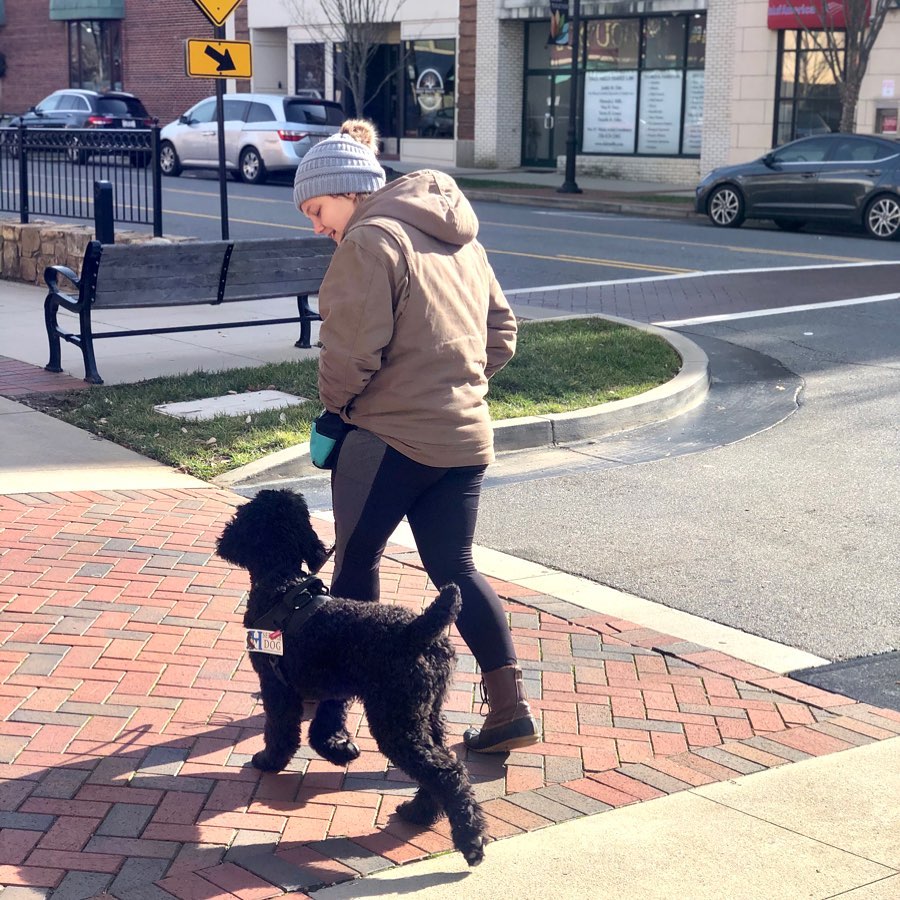Hearing Service Dogs
Providing Vital Assistance

A Hearing Service Dog can provide essential support for individuals who have lost some or all of their ability to hear. These impeccably trained service dogs can offer invaluable assistance to individuals suffering from hearing loss, in addition to giving peace of mind to concerned family members.
The specific tasks trained for a hearing service dog can be tailored from person to person. These tasks usually focus on alerting the dog’s handler to important auditory stimuli which the handler would otherwise be unaware of. These noises can include doorbells, fire alarms, an alarm clock, and more. A hearing service dog can even be trained to notify their handler of a loud crash or bang.
Hearing loss is becoming more prevalent across the United States, with almost 48 million people across the nation living with some form of loss of hearing. Although it is more common in older people, it can affect younger individuals, too.
Losing the sense of hearing can cause individuals to feel vulnerable and make them prone to preventable accidents. The addition of a hearing service dog to their life can literally provide another set of ears to make them feel more secure and reduce the potential for avoidable incidents. These incredible dogs are trained to perform tasks which are specific to their handler’s requirements.
The Benefits of a Hearing Service Dog
For people with disabilities, a hearing assistance dog can offer numerous benefits to their owners – and their families.
These dogs are trained to perform specific tasks to make everyday life easier. Not only are they accomplished at providing support for hearing assistance, but they also offer peace of mind and reassurance for concerned family members.
Some of the benefits of having a Hearing Assistance Dog include:
Increased Safety And Security
Unfortunately, people who are living with hearing loss can be vulnerable. They may be unable to hear important warnings such as fire alarms, smoke alarms or carbon monoxide detectors. They may also be unable to know when a visitor is knocking at their door or ringing the doorbell. A hearing service dog provides additional safety and security by alerting their owner to these noises.
Enhanced Independence
A hearing service dog gives a great deal of independence for their handler, especially those who live on their own. The owner’s reliable canine companion ensures that a phone call or doorbell is never missed again by alerting their owner to the noise.
Peace of Mind For Family Members
As a family member, it can be stressful knowing that your relative is vulnerable due to their hearing loss. The addition of a hearing service dog provides immediate peace of mind for the whole family.
Companionship
Aside from their capabilities as a service animal, service dogs can also provide valuable companionship, particularly for older people. The benefits of the mutual trust and friendship built between handler and service dog can never be underestimated.
"I can’t imagine my life without him.”

What Does A Hearing Service Dog Do?
Learn more about what a hearing service dog does, and how they help their handler to live a safer life.
Also referred to as a hearing dog or signal alert dog, a hearing service dog provides incredible support for their handler in everyday activities.
We have trained numerous dogs to assist individuals who have experienced loss of hearing. The support these amazing dogs are able to offer is an invaluable benefit to their owner.
Our years of experience means we can train hearing service dogs to perform tasks which are completely tailored to the needs of the handler. Each individual’s circumstances are different, and we understand how important it is for our dogs to be able to perform their tasks reliably and effectively. All of our service dogs are trained with their handler in mind.
We also understand that situations can change over time. Sometimes, the severity or specifics of a diagnosis can change. This can alter the nature of the help that is required from a hearing service dog. We stay in close contact with handlers and their families at every stage of the process, offering an unparalleled level of support and assistance.

Tasks & Training
A hearing service dog can be trained to perform many essential tasks which offer vital assistance to their handlers.
Our trainers have years of valuable experience when it comes to training service dogs. Every task is trained to suit the individual needs of the owner and their families.
Here are a few examples of typical tasks our hearing service dogs are trained to perform.

Danger Alerts
Hearing service dogs can be trained to alert their owners to sounds such as fire alarms, smoke alarms and carbon monoxide detectors. This is an essential safety mechanism for people who are hard of hearing.

Indoor Sounds
Hearing assistance dogs can notify their owners of a ringing doorbell, alarm clocks or a knock at the door. This improves the quality of life for people with loss of hearing.

Outdoor Sounds
In an outdoor environment, there are several situations which may be taken for granted, such as the noise of passing cars or even strangers passing from behind. A hearing assistance dog can assist their owners in these situations.
Who Can Benefit From a Hearing Service Dog?
Hearing loss is more common than you might think – one in eight Americans aged 12 or older has hearing loss in one or both ears.
Hearing loss – either complete or partial – can have a significant impact on quality of life. Consider these statistics:
- Out of every 1,000 children born in the United States, two or three are born with a detectable level of hearing loss.
- Around 15% of all American adults report some difficulty with hearing.
- 2% of Americans aged 45-54 have disabling hearing loss. This increases to 8.5% in the 55-64 age group, 25% for 65-74, and 50% for over-75s.
- Approximately 28.8 million adults in the US could benefit from hearing aids.
A hearing service dog provides independence, safety and security for anyone suffering from hearing loss. Family members and friends of individuals with hearing loss are also reassured that their loved one has a companion to improve the handler’s quality of life.

Which Breeds Make Good Hearing Service Dogs?
For some types of service dog, the type of breed used is of fundamental importance when training them to perform certain tasks. But what about for hearing service dogs?

Over the years, we have trained numerous dog breeds to perform service dog tasks.
Irrespective of the breed, most dogs have an incredible sense of hearing – their hearing is far more powerful than humans. They are also able to detect sounds at a much higher frequency. This sensitivity has been ingrained in dogs for centuries as they utilize them when hunting prey in the wild.
For a hearing service dog, the breed is not as important as with a mobility service dog (where size and stability matters). Instead, the dog simply needs to be stable in a variety of environments (if performing tasks out in public, such as identifying passing cars and other outdoor stimuli), well-socialized, and able to be trained to perform its given task reliably.
Do I Qualify For a Hearing Service Dog?
Learn more about our application process for hearing service dogs. Our team is experienced and has helped numerous families over the years.
If you and your family are interested in starting a new journey with a hearing service dog, the first step is to submit a preliminary application..
After the review of your application, you will be invited to have a phone or email consultation with a service dog trainer to discuss your application, specific needs, and possible tasks a dog could be trained to assist you. During the consultation, the trainer may ask that you supplement your application with additional information to aid the trainers in their decision of the correct methods of training your specific service dog.
After the approval of your complete application, you are admitted in to our service dog program. At this time, you will be sent a Training Agreement and Task/Performance Addendum. These must be signed and returned, along with a deposit of $2500 to hold your spot on our waiting list.

Learn More About Service Dogs
The service dog community has become vast and diverse in recent years. Now more than ever, families looking into autism service dogs are able to easily find an array of information at their fingertips. However, many have found that a lot of this information is confusing or even conflicting. So where do you start? For information on service dogs, we suggest becoming familiar with the definition, guidelines, and rules available for review by the Americans with Disabilities Act. This information is straight from the source and a great option for educating yourself on the subject of service dogs.

Contact us today!
Interested in adding a Hearing Service Dog to your family? Have questions about the process? Contact us today and a member of our specialist team will reach out to you!
There are a number of ways to get in touch. Whether it’s telephone, email, social media or our contact form below, we’d love to hear how we can help you.
- 704.500.8281
- info@autismassistancedog.com
- Check us out on Facebook